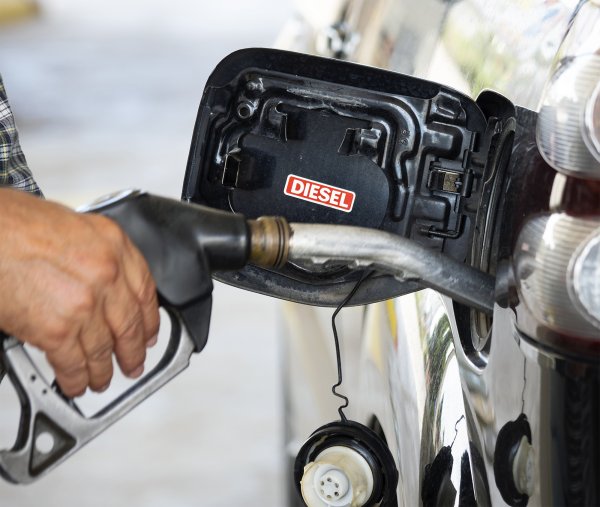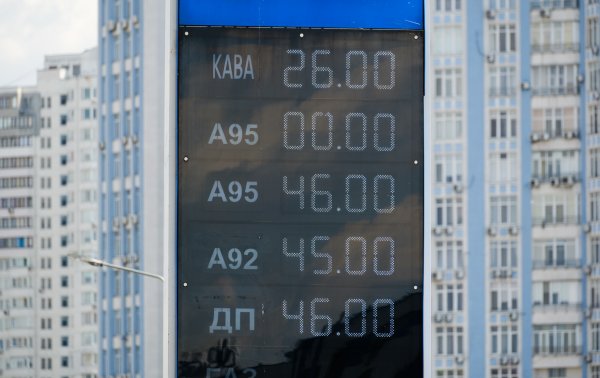
Photo: How the wrong gasoline can harm (Getty Images) Author: Konstantin Shirokun
It happens that the driver is forced to fill the car with gasoline with an unsuitable octane number. What can happen to the engine in this case, journalists from RBC-Ukraine Auto tell.
Read about the harm to the car and driver from gasoline with the wrong octane rating in the RBC-Ukraine article.
First, it is worth recalling that the only difference between modern gasolines of the same environmental class, for example, Euro IV, is the different octane number. Which is determined for each model by the car manufacturer, indicating the required index on the gas tank door and in the factory instructions: A-92, A-95, A-98, and so on.
Why is the OCH different?
The octane number (ON) shows the detonation resistance of the fuel, that is, its ability to withstand abnormal combustion of the fuel mixture in the cylinder – the so-called detonation. When the engine operates with detonation, its pistons, cylinders and valves wear out faster, and can literally fall apart. All modern gasoline engines are subject to detonation, because they are highly accelerated – they have a high compression ratio. And therefore they need high-octane gasoline. The nuance is in what exactly is considered high-octane.

If you filled up with A-92 instead of A-95
In the absolute majority of cases, an engine designed for A-95 will work on “ninety-second” without problems – at least, not noticeable to the driver. Many engines do not see the difference between these two grades, since their fuel supply control programs (fuel map) and ignition are written taking into account possible deviations in octane rating.
At the same time, many models operate on low-octane fuel with complications – a tendency to detonation, dips and overheating. However, the electronic engine control unit tries to mitigate these problems. But the driver may notice a drop in power, jerking of the car and excessive fuel consumption.
There are engine models that tolerate low octane ratings so poorly that they can result in a blown head gasket, destroyed pistons, and damaged exhaust valves. The greatest risk of such consequences occurs during sharp acceleration, vigorous climbing, fast driving with a full load, a trailer, etc.
In short, if necessary, you can fill up with fuel with a lower octane rating and carefully drive a short distance on it. But you shouldn't abuse the engine's leniency too often.
When you poured A-95 instead of A-92
The opposite situation is not so generous in terms of possible troubles: when you have to drive on gasoline with an overestimated octane number, the engine should not suffer. Neither “ninety-fifth” nor “ninety-eighth” will harm an engine flashed for A-92. And the terrible stories about pistons and valves burned through from the 95th have no technical basis.
In fact, everything is very simple: modern gasolines by their composition are devoid of factors that could increase the temperature in the combustion chamber and exhaust channels. High-octane gasolines A-95 and A-98 do not have a higher calorific value compared to A-92, and with AI-80 too. The combustion rate, which also affects the temperature in the cylinder, is also not fundamentally different for all three gasolines.
That is, there is no threat to the engine from gasoline with a high octane rating. But there is another nuance, perhaps unexpected for someone.

What is the harm of high octane gasoline?
Having more expensive and “higher octane” gasoline in the tank, the driver may notice …. worse dynamics of the car! This can happen precisely because of the lower calorific value of high-octane fuel. But in most cases, modern cars with an injection engine themselves adjust the ignition timing to adjust the engine to the fuel that is inadequate for it – and the car drives as usual.
In brief
There is a reason why a car manufacturer calculates its engines and models for a certain type of gasoline – many factors are taken into account, and we may not even know about some of them. For example, gasoline with different octane numbers is sometimes recommended for the same engine in different countries.
Therefore, it is best to fill up with the fuel that the official representative of your brand recommends for your car. But if you travel a lot around the country and do not want to violate dealer regulations, you can carry a small canister of your type of gasoline with you – in case the nearest gas station cannot satisfy your request.
Materials from Autocentre and Motor were used in preparing this article .
Let us recall that RBC-Ukraine recently reported why pedestrians are not always right.
